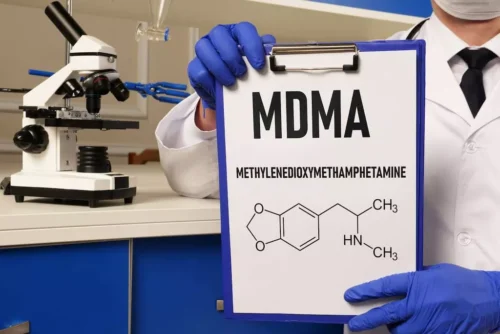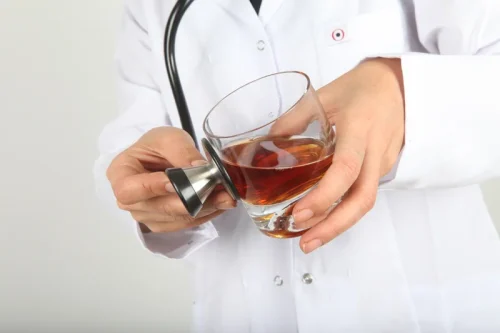
In this model, treatment success is defined as achieving and sustaining total abstinence from alcohol and drugs, and readiness for treatment is conflated with commitment to abstinence (e.g., Harrell, Trenz, Scherer, Martins, & Latimer, 2013). Additionally, the system is punitive to those who do not achieve abstinence, as exemplified by the widespread practice of involuntary treatment discharge for those who return to use (White, Scott, Dennis, & Boyle, 2005). Our second goal was to examine differences in quality of life betweenabstainers and non-abstainers controlling for length of time in recovery. Polich, Armor, and Braiker found that the most severely dependent alcoholics (11 or more dependence symptoms on admission) were the least likely to achieve nonproblem drinking at 4 years. However, a quarter or this group who achieved remission did so through nonproblem drinking. Furthermore, younger (under 40), single alcoholics were far more likely to relapse if they were abstinent at 18 months than if they were drinking without problems, even if they were highly alcohol-dependent (Table 3).

Models of nonabstinence psychosocial treatment for SUD

In the context of “harm reduction,” individuals may make positivechanges in their lives that do not include reduced alcohol use and may consider themselves“in recovery” even though their AUD status remains unchanged (Denning and Little 2012). For example, among the 2005and 2010 National Alcohol Survey respondents, 18% of current drinkers who identified as“in recovery” https://ecosoberhouse.com/ from alcohol problems (who do not use drugs) are DSM-IValcohol dependent, and 26% of current drinkers who also use drugs are DSM-IV alcoholdependent. Thus relying on DSM criteria to define a sample of individuals in recovery mayunintentionally exclude individuals who are engaging in non-abstinent or harm reductiontechniques and making positive changes in their lives.
- Miller et al. (in press) found that more dependent drinkers were less likely to achieve CD outcomes but that desired treatment goal and whether one labeled oneself an alcoholic or not independently predicted outcome type.
- We used the mean of the distribution of ranks for each intervention to present its relative order of preference based on the network meta-analysis.
Quality of evidence evaluation
B Nonabstinence remission included 18 percent “moderate drinkers,” 9 percent getting “drunk about once a week,” 6 percent “switched from whiskey to beer, . . . drank almost daily and sometimes excessively, [but] had experienced no problems from drinking since making the change.” The disease model of alcoholism and drug addiction, which insists on abstinence, has incorporated new areas of compulsive behavior—such as overeating and sexual involvements. In these cases, redefinition of abstinence to mean “the avoidance of excess” (what we would otherwise term moderation) is required. In the present follow-up, the recovery process for clients previously treated for SUD was investigated, focusing on abstinence and CD. All the interviewees had attended treatment programmes following the 12-step philosophy and described abstinence as crucial for their recovery process in the initial interview, five years ago. In previous research, several indicators of whether CD is possible are mentioned (Klingemann and Rosenberg, 2009; Klingemann, 2016; Davis et al., 2017; Luquiens et al., 2011; Berglund et al., 2019).
2 Quality of life and recovery from AUD
Early attempts to establish pilot SSPs were met with public outcry and were blocked by politicians (Anderson, 1991). In 1988 legislation was passed prohibiting the use of federal funds to support syringe access, a policy which remained in effect until 2015 even as numerous studies demonstrated the effectiveness of SSPs in reducing disease transmission (Showalter, 2018; Vlahov et al., 2001). Despite these obstacles, SSPs and their advocates grew into a national and international harm reduction movement (Des Jarlais, 2017; Friedman, Southwell, Bueno, & Paone, 2001). In addition to shaping mainstream addiction treatment, the abstinence-only 12-Step model also had an indelible effect on the field of SUD treatment research. Most scientists who studied SUD treatment believed that abstinence was the only acceptable treatment goal until at least the 1980s (Des Jarlais, 2017).
After transcribing the interviews, the material was analysed thematically (Braun and Clarke, 2006) by coding the interview passages according to what was brought up both manually and by using NVivo (a software package for qualitative data analysis). After relistening to the interviews and scrutinizing transcripts, the material was categorized and summarized by picking relevant parts from each transcript. By iteratively analysing and compiling these in an increasingly condensed form, themes were created at an aggregated controlled drinking vs abstinence level, following a process of going back and forth between transcripts and the emerging themes as described by Braun and Clarke (op. cit.). In the present article, descriptions of abstinence and CD and views on and use of the AA and the 12-step programme were analysed. Family involvement plays an important role too since their understanding and encouragement can fuel your determination even more on challenging days. Remember that the path towards lasting recovery isn’t linear — there will be ups and downs.
- “Moderation” is a term that is often used to suggest that a person with an alcohol or drug problem does not really have to give it up but can “control” it.
- For example, despite being widely cited as a primary rationale for nonabstinence treatment, the extent to which offering nonabstinence options increases treatment utilization (or retention) is unknown.
- Attempting controlled drinking in such cases often reinforces the addictive cycle rather than breaking it.
- The main reasons for having some concerns were lack of description in the randomisation process (39/64 studies) and unbalanced missing data between groups (13/64 studies); and the main reason for high risk of bias (20/64 studies) was missing outcome data.
- Although Wallace et al. reported no controlled drinking, a small group (4%) had “one brief contained return to drinking or drug use” in the 180-day period.
